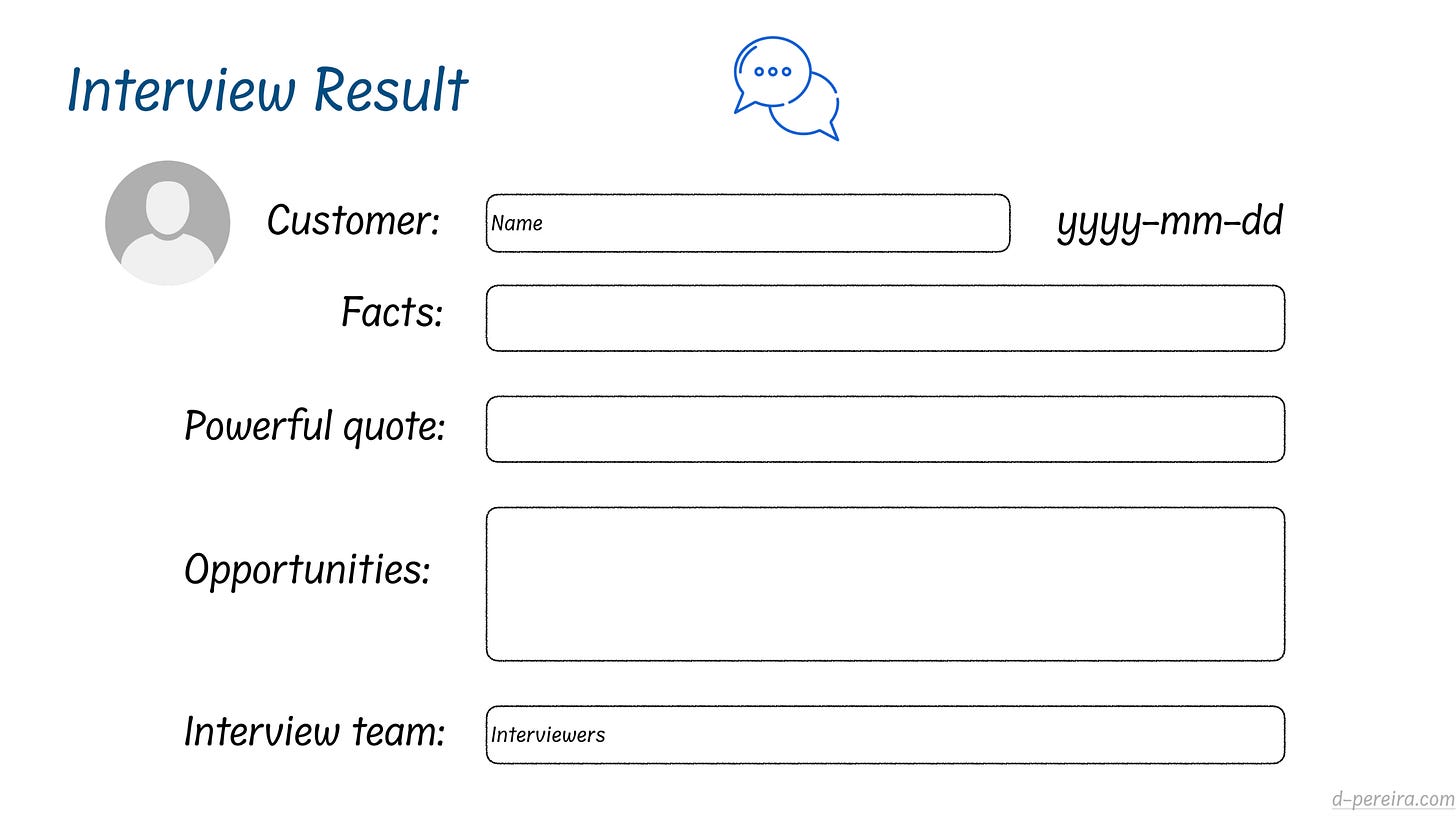3 Steps to Run Valuable Customer Interviews
Understanding the key aspects behind successful customer interviews
I’ve got a secret to share with you.
Too often, I missed the mark with customer interviews. I would talk to customers at least every second week and would still lead teams in the wrong direction. What upset me the most was the fact I was clueless about why we landed in such situations.
Today, I realize I got too bugged with the question, “How often do you interview customers?” That’s an important question, which Teressa Torres recommends getting in touch with customers at least once a week. Yet, the most valuable question is how do you run customer interviews?
Extremes are bad.
My initial take was just to run the interview and get insights. Of course, it didn’t lead to valuable insights.
The second take was over-prepared. Interviews lost touch and were mechanic.
Now, let me share with you my take on running customer interviews successfully:
Prepare: Take some time to define the research question and align it with the interview team
Run: Structure the conversation and know which questions to ask, where to dig deeper, and what not to do
Debrief: Right after the interview, get together with the interview team and exchange observations and learnings
Ready to go a bit in-depth? Let me help you understand it better :)

1 - Prepare
Customer interviews require a minimum level of preparation. You can keep it simple. My take is the following:
Interview team: I recommend a UX designer, Product Manager, and Software Engineer with digital products. This way, you will have a good diversity of perspectives.
Research question: What do you want to learn from your customer? That can be an assumption you want to test. From there, elaborate on the questions you want to bring to the session.
Target audience: Interviewing the right audience is fundamental to answering your research question. If you do it incorrectly, you get a false positive or negative. Be as clear as possible.
Here’s my template:
And here’s an example:
Download it for free to simplify your preparation.
2 - Run
How you run the interview is fundamental to generating valuable insights. Some important aspects are:
Duration → Keep it short and sweet. I find 25 min interviews more engaging and easier to get people to talk to. You may need more time in expert scenarios, but I’d recommend breaking into multiple interviews instead of having long ones.
Roles → Assign a role for the interview team members. Define the interviewer, observer, and note-taker. Every role will help you create value from the session.
Opener → As you start the interview, make the scenario clear. Good openers will make it comfortable for the interviewee. For example, “We’re here to learn from you. We’re not here to search for what’s right or wrong. Please, share your experiences openly, which will be of tremendous help to us.”
Speaking/Listening → The interviewer should talk no more than 20%. A great balance is 20% speaking and 80% listening. You want to learn from customers, not to lecture them.
Now, I need to share the biggest challenge of interviews with you. How you ask questions sets the outcome you get.
Use open-ended questions. Don’t go for yes/no ones.
Ask one question at a time. Embedding multiple questions at once confuse people.
Avoid “would you” questions. What people say and do differ a lot.
Search for stories. Ask for experiences and learn from reality.
Avoid “why” questions because it puts people on the defensive. Rephrase with what for and how. Instead of “Why did you do it,” ask, “What did you aim to achieve?”
Watch the following video for more insights:
Debrief
A common mistake is to set several sequential interviews without any break between them. This will make it harder for you to gain insights. A better way is to debrief for 15 minutes right after the interview.
As you conclude the interview, get together with the team and summarize the learning. You had a research question, so clarify what you learned from your interviewee, what you observed, and something that stood out.
I recommend having a template for that. Here’s what I use:
And here’s an example of a filled one.
Download the template for free.
Additional Material
Watch The Mom Test book summary
Do you want to go further?
You can get access to all my open templates for free and more. You can also join one of my upcoming cohorts :)
Let’s rock the product world together.
🚀 Premium material for subscribers
A single link that will change your life for the better :)





